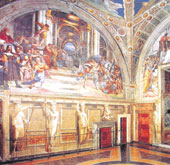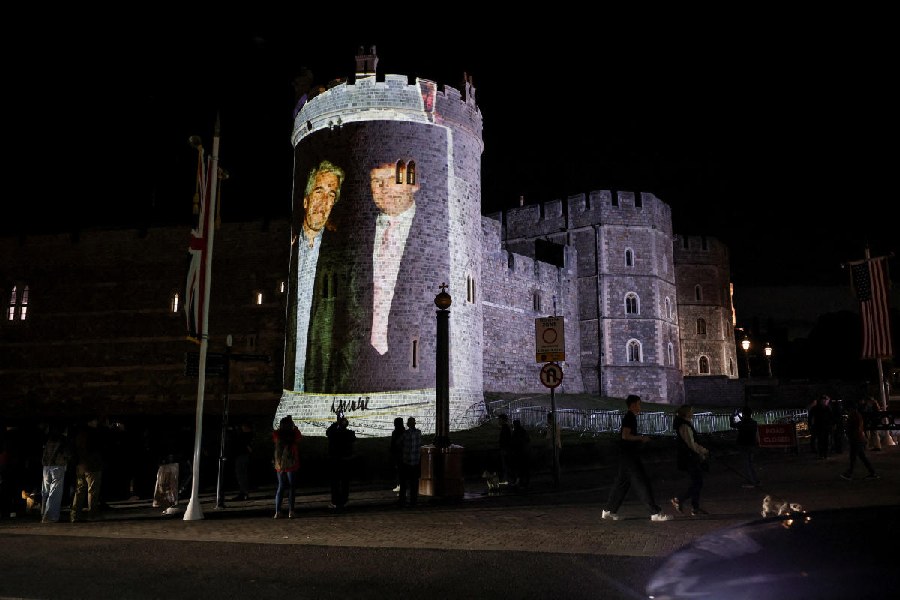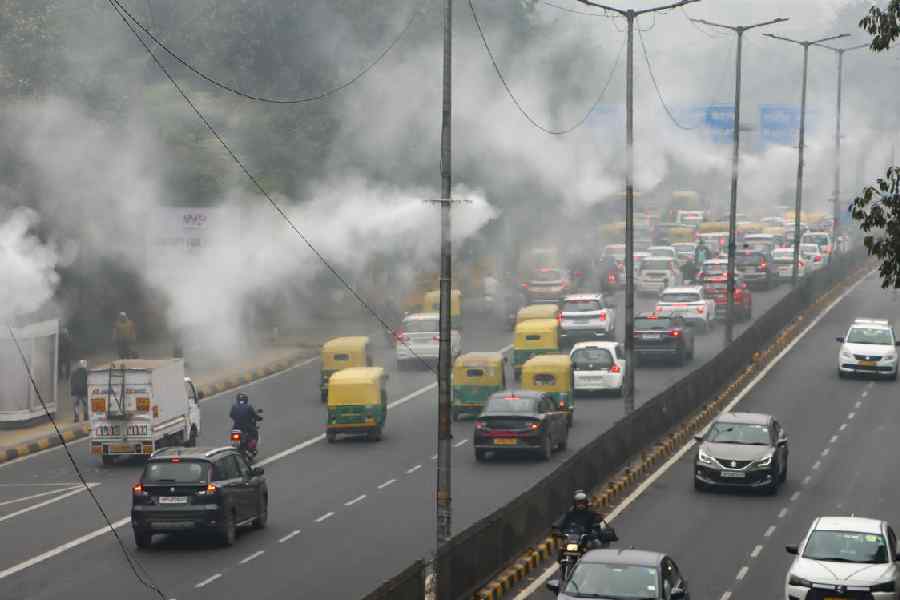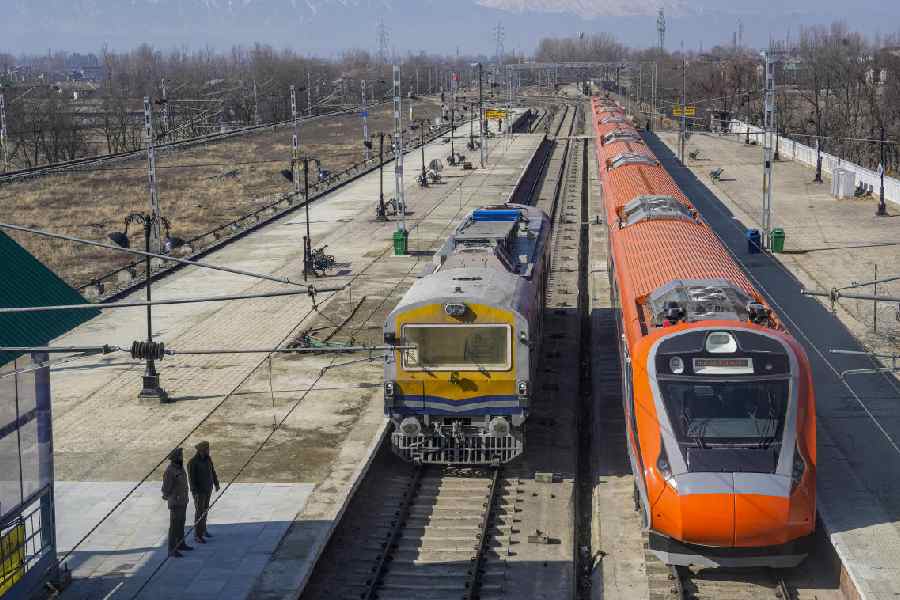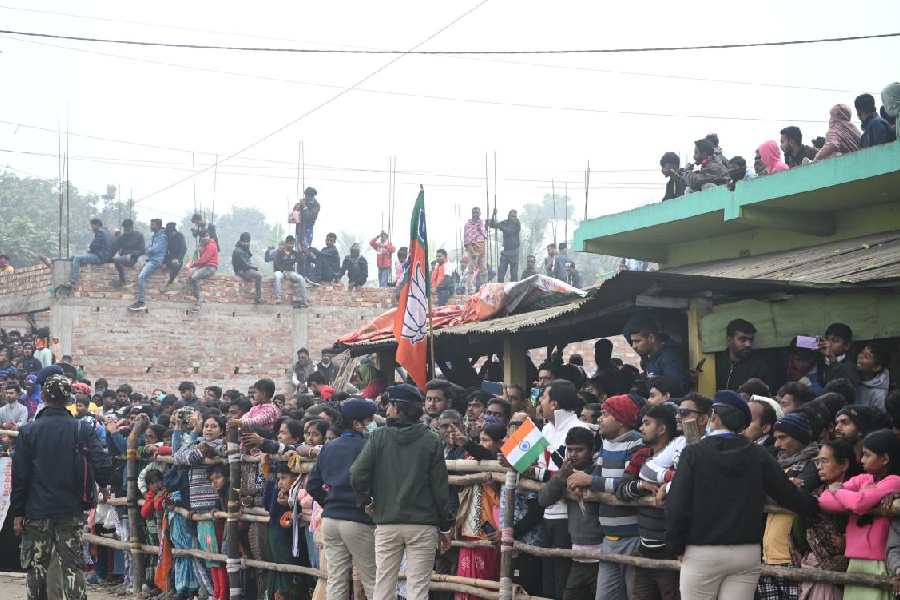 |
 |
| (From top): A section of the Sistine Chapel; a detail from Michelangelo’s The Birth of Adam; a view of St Peter’s Basilica |
Perhaps the smallest country in the world ? maybe smaller than Monaco, the veritable gambling heaven of Europe ? the Vatican, in contrast, has about it a silent sense of devotional passion that is palpable and almost Indian in its feel and flavour. I am struck by the amount of devotees who turn up to get a glimpse of the Pope, if they are lucky, on any given day. Virtually from the crack of dawn, busloads of supplicants and sinners turn up to beg for favours and be washed clean of their transgressions in the presence of the Holy Father.
It is almost like queuing up outside the Vishwanath temple in Varanasi and hoping for the best deal heaven can provide! Though his temporal ruling powers are limited to the Vatican’s 108.7 acres, the Pope exercises the spiritual leadership of millions of Roman Catholics across the globe. Granted an Independent status by the Lateran Treaty signed in 1929 by the Papal Secretary of State, Gasparri, and Dictator Benito Mussolini, today the Vatican is the smallest of the world’s sovereign states and its heart is the repository of a great spiritual domain. It even has its own postage stamps that separate it from Italy!
We are on a holiday in Rome and Vatican Country is very much part of our itinerary. All this while we have been hedonistic in our pleasures, drinking and eating and tipsily throwing coins into the Trevi Fountain. But when we finally take that hallowed trip to the Vatican, the throng of milling tourists seems a bit overwhelming. Vatican is certainly the Holy City to which all roads lead! Any road at all will be a shock, for Vatican is girdled by a circle of new apartments, garish constructions and municipal blocks of flats on its outskirts.
But when you finally enter its heart, passing the almost 2,500-year-old wall at the Gate of San Giovanni, you are thrown into a sort of an international Kumbh Mela! Monks bustle up and down the streets with the exuberance of a Tintoretto painting of Paradise. Nuns and priests seem to float on winds which billow out their robes like sails. And what bright sails! No pirate flag was so dramatically hoisted than the scarlet cassocks of German theological students, the blues from Greece and the purples of Scotland. Against them, the browns and blacks of America and Ireland are funeral-like and sombre. One wonders if the clergy has heard the old Roman saying, “Faith is made here and believed elsewhere.”
The common man, of course, is a breed apart. Gregariousness makes Italians most universal in Europe. The peasant with whom I share a bus ride is completely at home in my company. He may be part of a delegation travelling to a papal audience and it may be his first trip to the Vatican, but he is none the less a citizen of the world. At noon he offers me a chunk of his bread with salami and a handful of olives. He also hands me his Chianti bottle. After all, I am his travel companion and so he wants to know everything about me. As an Indian, he certainly makes me feel at home! However, the Romans themselves are not overwhelmingly religious, though Rome is dotted with hundreds of churches. A 19th century pope, asked to restore Holy Week rituals which had been allowed to lapse, cheerfully said, “Why not? It will amuse the English.”
St Peter’s, largest of all churches, dominates the Vatican landscape. To the left of its dome is the peak-roofed Sistine Chapel and beyond lies St Peter’s Square. Pomp and pageantry mark all papal ceremonies. Even the death of a Pope is attended by ceremonials showing the Catholic Church at its most majestic. The body is laid to rest in St Peter’s, a high mitre on the head of the deceased and tall candles burning by his catafalque.
As in death, so in life too, the crowning of a pope is just as spectacular. Multitudes throng St Peter’s Square, framed by the massive 17th century colonnades of Bernini, built during Pope Alexander VII’s reign, with the papal apartments lying on the extreme right. Walking down the Square, I’m reminded of that marvellous film, Shoes of the Fishermen, that had captured the pomp and pageantry of such ceremonies.
The Sistine Chapel, a pilgrimage for all art lovers, takes its name from Pope Sixtus IV Della Rovere. Dominating its ceiling and walls are some of the most awe-inspiring frescos and decorations. The chapel’s interior consists of a single long nave surmounted by a flattened vault with spandrels and a lunette above each of the 12 arched windows. The floor is of multi-coloured marble and a marble chancel screen separates the presbytery from the general body of the chapel. The features of Sistine Chapel testify to the Pope’s desire to fashion a Renaissance version of the great Roman basilicas, with close ties, however, to the paleo-Christian and medieval traditions of the Catholic Church.
The happiest genius of the Renaissance, Raffaello Sanzio or Raphael, was asked by the powerful papal patron of the arts, Julius II, to paint the pope’s apartments in 1508. So pleased was Julius with Raphael’s results that he dismissed all other artists, ordered their paintings to be whitewashed over and asked the young artist to paint anew. The Vatican frescos, which Raphael took three years to complete, constitute a majestic panoramic allegory of Renaissance civilisation in which classic culture is artistically united with Christianity. Raphael’s favourite theme was the Madonna; he painted 50 versions, which today are spread over the Western world from Washington’s National Gallery to Leningrad’s Hermitage.
But the Pope’s real favourite, was Michelangelo Buonarroti. His fame had already come with the creation of The Piet?, which he had sculpted for the St Peter’s basilica. And his heroic male nude in Florence, the statue of David, had fetched him further laurels. When Pope Julius called him back to Rome in 1508 to paint the ceiling of the Sistine Chapel, Michelangelo protested that he was a sculptor, and recommended Raphael instead. But Pope Julius insisted and the artist, lying on his back on a scaffold, spent four and a half years covering the ceiling with his genius. In a hundred odd panels he told the Biblical story of man’s origin, starting with the creation of Adam and even today, the entire world agrees that it is the greatest painting achievement in history.
Together with Raphael’s tapestries and Michelangelo’s Last Judgement, I witnessed, with sudden tears pouring down my cheeks, the ultimate triumph of Italian Renaissance art. It is an experience I’ll cherish always. For, as John Keats had said, ‘beauty is truth, truth beauty ? that is all ye know on earth and all ye need to know.’

